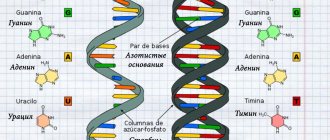Many people, back in school, dreamed of not spending hours memorizing poems, but memorizing them immediately after the first reading. In fact, people with such phenomenal memory exist, and it is called eidetic, photographic or visual. For those around them, they are real talents, they are admired, they want to be like them. But psychologists and especially psychotherapists do not all share such enthusiasm, because they consider this ability to be a serious deviation.
So what exactly is eidetic memory - a sign of genius that should be proud of, or a pathology that needs to be treated?
How memory works
We take memory for granted, but scientists are still studying the human brain and are amazed at its capabilities, including memory.
Without the ability to remember, we would not be human, because our personality is a collection of memories and conclusions drawn from them.
From a scientific point of view, memory is information encoded in the brain in the form of signals transmitted and changed between neurons. This is a complex process involving billions of neurons, each part of the brain responsible for a specific type of memory.
The parietal cortex of the brain is responsible for musical abilities; when a person needs to play an instrument, this area is involved. The hippocampus is responsible for new memories. If it is removed, then the person will remember the past, but will not be able to remember new information, it will simply be instantly forgotten.
The localization of memory has not been precisely proven, but the hypothesis that each area is responsible for its own type of memory remains relevant.
There is a procedural memory, it is not connected with the hippocampus, so it is impossible to unlearn how to ride a bicycle, run, walk, or swim if it is removed.
Scientists cannot say exactly how long-term memory works; the exact mechanisms of memorizing information and storing it have not been studied. There are only guesses and assumptions. But a memorization algorithm has been identified that works on all healthy people:
- the process of capturing information;
- retention in the brain;
- reproduction;
- forgetting.
People tend to quickly forget information that is not valuable and is not relevant. This rational use of neural networks allows us not to think about everything we know, giving us the opportunity to focus on new knowledge.
Phenomenal memory is also not fully understood. People with this ability can extremely quickly process new information in their brain and store it, when a person with ordinary memory quickly forgets random data that is not supported by meaning, emotions, etc.
People with phenomenal memory can look at a piece of paper with random notes on numbers, words, dates, facts and remember them by heart in a few seconds, and then voice what they saw exactly. This is amazing and opens up new boundaries of human capabilities.
Books on the topic
The book by Stanislav Matveev is worthy of attention (on some sites the author is erroneously presented as “Matvey”). In his work, Stanislav shares methods of memorizing information and uses practical examples to prove that anyone, not just a personality-phenomenon, can achieve fast and high-quality memorization of information.
An interesting method of work is proposed by Konstantin Dudin. His method can be found online. According to Dudin, in order to have supermemory, you must, first of all, learn to forget unnecessary information, that is, to make room for new, more relevant information. This will help relieve the brain during memorization and save you from overload. Dudin's course includes a separate section on forgetting.
Harry Lorraine's course is very popular in the West; it can be recommended to students of any age, adapting the exercises to a specific target audience.
Before starting classes, you should familiarize yourself with the educational literature
It is recommended to start memory training for boys and girls from childhood, then it will be possible to achieve the desired results faster and better. However, it is possible to develop phenomenal talents for memorization in a person both in adolescence and adulthood. The main thing is perseverance, perseverance and working according to the system, in accordance with the chosen methodology.
Kinds
Phenomenal memory also comes in several types, just like ordinary memory, depending on the area responsible for the type of memory. This means that people do not remember absolutely everything, but rather remember information best in a certain way.
The most popular type is photographic memory. It is characterized by an accurate reproduction of the picture of what was seen, be it a route somewhere or the arrangement of things in a room. A person with such a memory can easily remember, even after many years of absence, what was located, where it was, what was built, etc.
Auditory phenomenal memory is less common; most often it is characteristic of composers and musicians. A person who has this type of memorization can easily reproduce audio information. As soon as he hears something, it is immediately stored in his brain. Such people can write down what they hear from memory in a notebook or immediately repeat it on their musical instrument.
There are also individuals with mathematical memory who can easily do complex calculations in their heads and remember these processes.
And there are those who easily reproduce information received in text form. Such people only need to read it once and that’s it. They can recite paragraphs, novels, stories, etc. by heart.
Main characteristics
Visualization + sensory
Reproduction of visual images first of all, all others are secondary and only follow visualization. The eidetic initially remembers the picture: a sandy beach, a blue ocean, a sun lounger, vacationers, palm trees. When he introduces her after a while, he will be able to tell what he was holding in his hands at that moment (touch), how bitter the cocktail was (taste), what his companion said (hearing), what perfume she was wearing at that moment (smell) and even how hot the sun was (“body memory”).
Detailing
The smallest depiction of images: details that no one pays attention to are remembered. For example, how many buttons were on the jacket or how many lines were on the page. First of all, these nuances concern the visual image. It’s not for nothing that eidetic memory is also called photographic. It’s as if a person takes out a snapshot of an event in his head and describes it.
Involuntary retention
Initially, a person does not set himself the task of remembering something specific; all this is deposited in his consciousness on its own. However, this property is characteristic only of born eidetics. Those who develop their photographic memory, of course, do it purposefully.
Random Play
A person can remember the desired image at any time.
Large volumes
Naturally born eidetics, as a rule, simply have an endless storage of memory. That is why they surprise others by the fact that they can easily speak 20 different languages, accurately quote classics, and know all of Shakespeare by heart.
Brightness of images
Conventional memory is characterized by the gradual erasure of images. Years later, we vaguely imagine the faces of people we haven’t seen for too long, we forget their names, and we barely remember the circumstances of our acquaintance. Eidetics, having experienced something once, will never forget it. If at the age of 20 they were introduced to some mutual acquaintance with whom they never even crossed paths, at 50 they can easily tell what his name was, what he was wearing and what timbre of his voice he had.
How to develop phenomenal memory
To surprise others with instant reproduction of information, you need to train your memory.
Our brain has limitless possibilities if it is developed. First, you should get into the habit of memory exercises. Only if you practice daily for a long period will the result be visible.
To do this, you need to sit down and try to reproduce the information in your brain into images:
- Colored: the more spectacular, the better the information will be reflected;
- Volumetric: spatial thinking will be useful to consider memories from different angles;
- Large: the larger the image, the more space it will take up in the brain and the better it will be remembered;
- Detailed: do not forget about the details and little things, they matter;
- Bright: the brighter, the easier it is to remember; dull and nondescript images are quickly lost.
In addition to developing memory through imagery, there are other techniques. Some of the most popular are associative and mnemonics.
The essence of such exercises is to find an association with anything to strengthen the semantic connection and store information in the brain. Some people try to find a pattern in the numbers or associate them with the birthday of their relatives. Others associate numbers not with dates, but with images: two is a swan, five is the English S.
Mnemonics involves the development of event chains for better memorization. If a person is given random words that are in no way connected with each other, then he should come up with a story that involves all the objects.
For example, a number of words are given: candy, scarecrow, bottle, sock, snow. Using mnemonics, we come up with a series of events: the scarecrow found candy in a bottle and poured it into a sock while it was snowing. The main goal of the technique is not only to come up with a chain of actions, but also to clearly present it.
This type of memorization is often used in language learning apps. While you are learning words, the program suggests looking at a picture to create a connection with the word, and suggests reading a phrase involving the word being studied to create an image and a vivid event.
Another effective method to train the brain and develop memory is mindful reading. To do this, you just need to regularly read, take notes, and speak out the information you have learned. It is important to read not for the number of pages, but for the information, having time to analyze every word.
Associations and mnemonics
These are perhaps the most popular ways in which you can develop memory. For example, in order to remember a long mobile phone number, many try to find in it an important date, their birthday, postal code, etc. Some do differently. They create images: two looks like a swan, one resembles a candle, five looks like an English S, etc.
What about mnemonics? This set of techniques involves the creation of event chains by a person. Here the ability to think figuratively plays an important role. For example, you need to remember the following chain of words that are in no way related to each other: bus, snake, hat, bottle, rain, yellow. How to do it? Easily! Just imagine how a snake in a yellow hat rides on a bus in rainy weather. It's a bright picture, isn't it? This is what was discussed above. The brighter the image, the easier it will be to remember something.
Famous personalities with phenomenal memory
Phenomenal memory has helped many people become outstanding and go down in history.
Knowledge is power, and these people were able to remember it and apply it competently.
- Napoleon. Historians say that the French leader knew his military personnel by heart: by sight and name. He could also retell in detail a book he had read many years ago.
- Theodore Roosevelt. He was able to do many things at the same time and was famous for multitasking. The US President read 2-4 books daily, memorizing the contents and easily retelling them in detail to his family and colleagues.
- Nikola Tesla. The world-famous inventor, who gave humanity research on alternating current, was famous not only for his discoveries and deep knowledge in the field of physics and engineering. He had a photographic memory, which helped him store a huge amount of information in his brain. The researcher rarely wrote down notes because everything was stored in the safest place - memory. When the laboratory suffered a fire, he easily recovered the data thanks to his phenomenal memory.
- Alexander Alekhin. The Russian chess player, famous in the 20th century, according to contemporaries, could play simultaneously with dozens of opponents, easily switching between games, thanks to his memory and rapid processing of information. He easily remembered combinations and moves, which gave him an advantage in the game and made him a great grandmaster.
- Sergei Rachmaninov. He had a phenomenal auditory memory, could remember a complex piece in a few seconds and reproduce it, write it down in a notebook. Thanks to his skills, he became an outstanding pianist, composer and conductor.
These people made a huge contribution to the development of humanity and not without the participation of their amazing ability to quickly remember. Phenomenal memory is not a fiction or a myth, but a real skill that can be innate or acquired if you train it regularly.
Examples of people with such memory
Phenomenal memory is a phenomenon characteristic of many outstanding personalities. It is known that such abilities at different times were possessed by:
- Physicist Nicolo Tesla;
- Composer and pianist Sergei Rachmaninov;
- Pope John Paul II;
- Garry Kasparov, famous chess player;
- Julius Caesar, ancient Roman emperor.
It is noteworthy that most outstanding individuals with super abilities were just as successful in other areas (for example, Julius Caesar was not only an influential politician, but also an excellent commander). Therefore, psychology experts who consider extraordinary memory an anomaly are not always right.
High speed of memorization will help on the path to fame
Adviсe
To have exceptional abilities, regular practice to improve them is important.
Here are some tips to help you master phenomenal memory:
- Spend at least 15 minutes a day training your brain and memory;
- Play chess;
- Read consciously, retell what you read out loud;
- Solve puzzles, puzzles, crosswords, rebuses;
- Learn poetry or prose by heart;
- Do mathematics, do not delve into integrals and logarithms, even solving arithmetic examples has a strong effect;
- Try to constantly train your memory in life by memorizing phone numbers, addresses, names, shopping lists, car numbers, random facts about people;
- Don't neglect your health and eat right;
- Play sports, scientists have found that this has a beneficial effect on intellectual abilities;
- Get enough sleep and don’t get overtired, give yourself a rest if you’re tired;
- Don't forget to walk and breathe fresh air.
By following these tips, you can improve not only your memory, but train your brain, make yourself a more well-read and interesting person.
Photographic memory
This is the most commonly encountered “variety” of the phenomenal ability discussed. People who have it are no different from others. They may forget about a relative's birthday, that they need to buy bread on the way home, or pay for the Internet.
But let’s say such a person finds himself in an unfamiliar city. He stayed there for only a day and then left. And many years later he happened to find himself there again. What then? It won’t be the slightest difficulty for him to remember all the roads, bus stops, store locations, etc. By closing his eyes and trying to reproduce his long-traveled path in this city, he will be able to “see” not only the streets, but even the names on the signs, numbers houses, the faces of passers-by.
Exercises and methods for memorizing information
In order to keep a large amount of data in your head, you can use different methods. They are all quite simple, but effective. Typically, psychologists recommend the following techniques:
- Association method. For example, to remember a phone number, you need to find numbers associated with some important event or image (a relative’s birthday, your own age, the current year);
- Mnemonics - used to keep in mind a group of words that are not related to each other in meaning. It is necessary to compose a sentence from these words and present it visually;
- Mental creation of a colored, colorful image based on a text read or heard;
- Development of reading speed and concentration on what is read.
Mnemonics for memory development for adults and children - methods and techniques
These methods can be alternated with each other and used in different situations, depending on the type of information to be remembered. In order to develop fast musical memory, psychologists recommend listening to music as often as possible and trying to reproduce what you hear with your voice or using any instrument.
Attention! Daily training for 10-15 minutes will be much more useful than training 2-3 times a week for an hour. Exercising too much intensely can overload your brain. After each lesson, it is necessary to carry out mental and physical relaxation.
Combining several techniques helps to quickly develop abilities.
Aivazovsky method
It is believed that the artist I.K. Aivazovsky had eidetic memory. He could mentally not only reproduce a picture of a seascape in motion, but also stop it at any moment. This is what allowed him to depict the storm, waves, splashes, colors of the sky and other details of seascape painting with such precision.
In psychology there is even a separate method for developing eidetic memory, which bears his name. It's quite simple to master:
- Choose one item.
- Watch him closely for 4-5 minutes.
- Close your eyes, mentally imagine it and describe it to the smallest detail (color, size, shape, details).
- Open your eyes, compare the real and the images reproduced in your thoughts, notice what was missed.
- Repeat the exercise from the very beginning.
- Do this until the images completely match.
Each time you need to choose more complex objects (you can start with a TV and end with a picture) and gradually reduce the observation time.
Neurobics
Helps train eidetic memory and neurobics - gymnastics for the brain. The most effective exercises:
- Constantly go to the same place (to work, to the store) using different routes and at the same time do the casual observation exercise (see above).
- Once a week, from morning to evening, do all the manipulations that you are used to performing with your right hand with your left (brush your teeth, hold a spoon, write).
- Once a day, read a highly intelligent text on a topic about which you understand nothing. Try to delve into every word and grasp the meaning.
- When answering someone's questions, watch the construction of your speech. Speak as if you were writing an essay. At the same time, everything said must be clearly reproduced in the head in the form of text.
- Mute the TV and try to understand what is being said on the screen. Then test yourself (recordings of the programs can be found on the Internet).
So you don't have to be born with the phenomenon of photographic memory. You can develop it yourself. Of course, it will not be as bright and voluminous as that of eidetics, but you can learn to quickly memorize and reproduce a sufficient amount of information.
Schulte tables
Schulte tables represent a square in which numbers or letters are arranged in a chaotic manner. Using these tables, the speed of finding the required characters in a certain order is checked. The simplest example of a Schulte table is a square, conditionally divided into 25 identical cells (5 in each row), where numbers from 1 to 25 are randomly located. The task is to find all the numbers in order as quickly as possible.
This exercise is an excellent workout not only for memory, but also for peripheral vision, speed reading and attentiveness. In each new workout, you must use a table with a changed arrangement of numbers.
Arithmetic
When you are stuck in a traffic jam or a long line, do not waste time, but count it. For example, add up the sum of the numbers on the license plates of the cars in front. Or count the number of chocolates sold at the checkout. Or multiply the number of people ahead of you in line by the average service time per person. At the same time, you can calculate how long it will take your turn to reach you. So, you will not only improve your computing skills, but also give your memory a great workout.
Seven Principles of Quality Memory
- The pause principle allows you to take a short break from your activities. It allows you to avoid any hasty decisions.
- Using the principle of relaxation, a person increases concentration and removes the blockage of memory mechanisms that resulted from haste or stress.
- The principle of awareness allows you to concentrate on what is most important. This method also allows you to better remember surrounding circumstances.
- Visual elaboration makes it possible to remember, for example, the location of objects. This also allows you to pay attention to various little things that can play an important role.
- During verbal processing, a person seems to leave a personal commentary on surrounding events. This personal assessment of events helps to better remember circumstances.
- Evaluating events using categories makes it possible to classify any event according to several criteria. This principle then allows you to better remember these events.
- Reviewing and periodically using information makes it easier to remember the material and then quickly retrieve it from memory. If you constantly refer to certain facts, they are better remembered.
Playback of the day
Every day before going to bed, try to remember your day in detail. First, try to remember in your memory what you did every hour. Then complicate the task and try to remember your actions every half hour, 10 minutes. And then scroll through the day in the opposite direction - from the present moment to waking up. It is not simple. In any case, make every effort to remember everything in detail. Gradually you will get better and better at it. You will begin to be more mindful of what you do throughout the day.
Mobile applications
Currently, many applications have been developed for smartphones that help develop memory and improve brain function. For example, the same Schulte tables. In addition to them, there are applications that offer tasks for mental calculations, finding differences between two pictures to develop attentiveness, various puzzles and logic games. If smartphones are firmly established in our lives, then let them bring only benefits. Therefore, instead of hanging out on social networks, I recommend using them to train your memory and thinking - fortunately, there are many opportunities for this.
And finally - an interesting video. By the way, at the very beginning of this video there is an attentiveness test, which I personally failed miserably.
Degrees of eidetic memory
The development of eidetic memory goes through five stages:
- Reproduction from memory is possible only with the image fixed.
- Reproduction of images without additional fastening, but this only applies to weak images.
- Reproducing more vivid images and details.
- Involuntary memorization of important images with their further clear reproduction. At this stage, tactile, auditory, taste, and motor memories (sensory modalities) appear.
- The highest degree, in which a person remembers everything in detail and very vividly, feels all the events of the past as in the present.
In the latter case, it is customary to distinguish two more types of memory: B and T. The first group includes those memories that a person controls and calls up from the depths of memory. Images from group T are not amenable to personal control; they emerge chaotically anywhere and at any time.
Interesting! Group T memories sometimes turn into hallucinations.
Eidetic memory training
Is it possible to become eidetic? Yes, photographic memory can be trained and developed. However, exercises for children and adults will be slightly different.
In children
At what age does eidetic memory appear? In senior preschool - junior school age. Therefore, the optimal age for training eidetic memory in children is 3–7 years. Otherwise, eidetic memory will be replaced by cause-and-effect remembering. And here there is no time for detailed images. However, according to other studies, the peak of eidetic behavior occurs between 11 and 16 years of age. The optimal solution is to train your memory from early childhood and throughout your life.
What harms memory
Of course, memory deteriorates for natural reasons with age, but maintaining the ability to remember the necessary information is quite possible if you follow certain rules and avoid risks.
Absent-mindedness damages memory. If we do not concentrate our attention on the necessary information through an effort of will, it does not linger in our heads.
Those who do not get enough sleep suffer from forgetfulness. Studies have shown that if you stay awake for 36 hours, your ability to reproduce information is reduced by 40%.
The hippocampus, which is key to storing information in long-term memory, works worse due to stress. Adrenocorticotropic hormone and cortisol, the surge of which the body reacts to an unpleasant situation, prevent the consolidation of memories.
If a stressful situation continues for a long time, the tissue of the hippocampus degrades (in children who survived abuse, the deterioration of the structure was 12%).
Poor nutrition is not good for the brain and memory
An unhealthy diet can harm your brain:
- alcohol;
- fast food;
- excess sugar, fructose and sweeteners;
- flour, fried and fatty;
- red meat, sausages and sausages;
- highly salted food.
Thus, non-compliance with the norms of a healthy lifestyle and an overly violent reaction to what is happening undermine memory.










